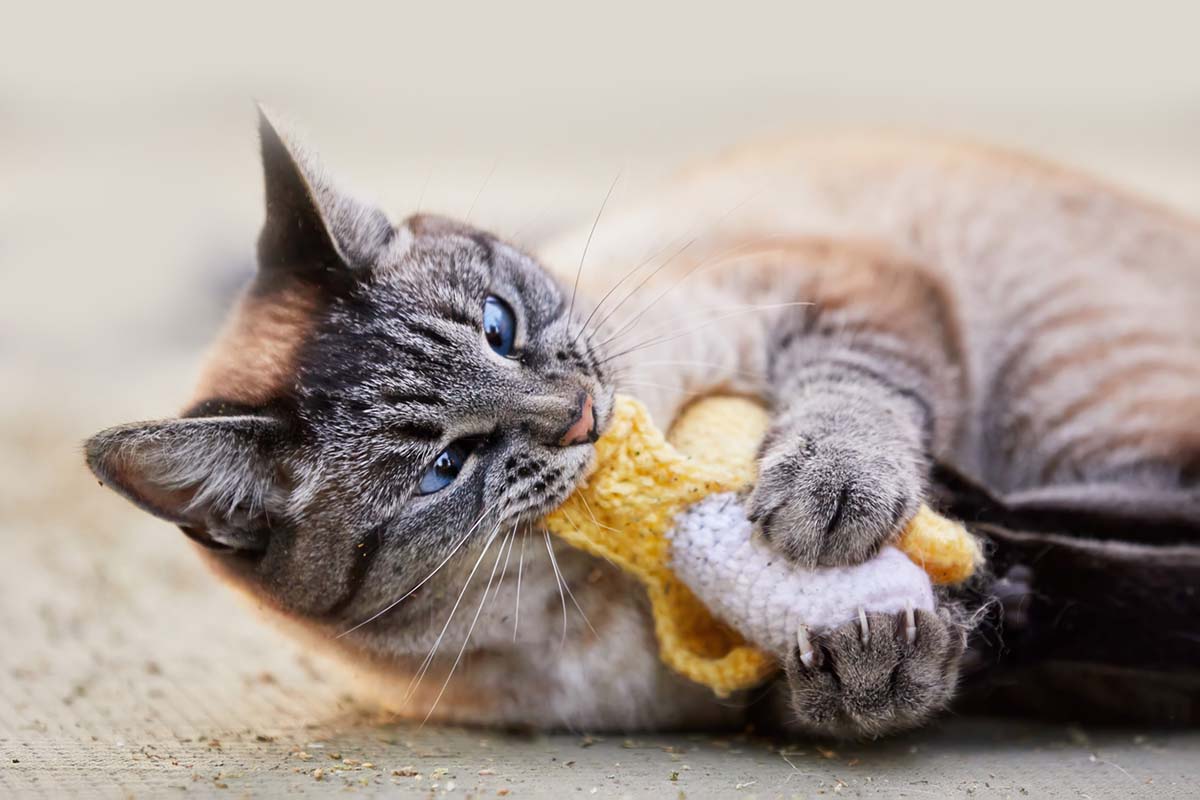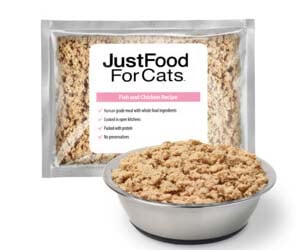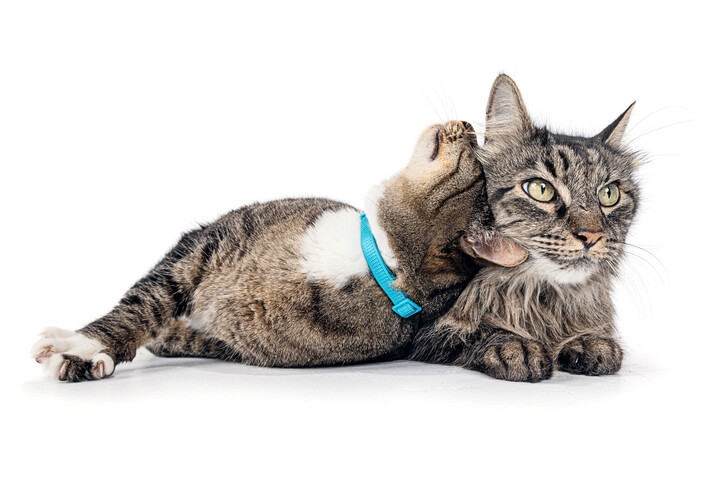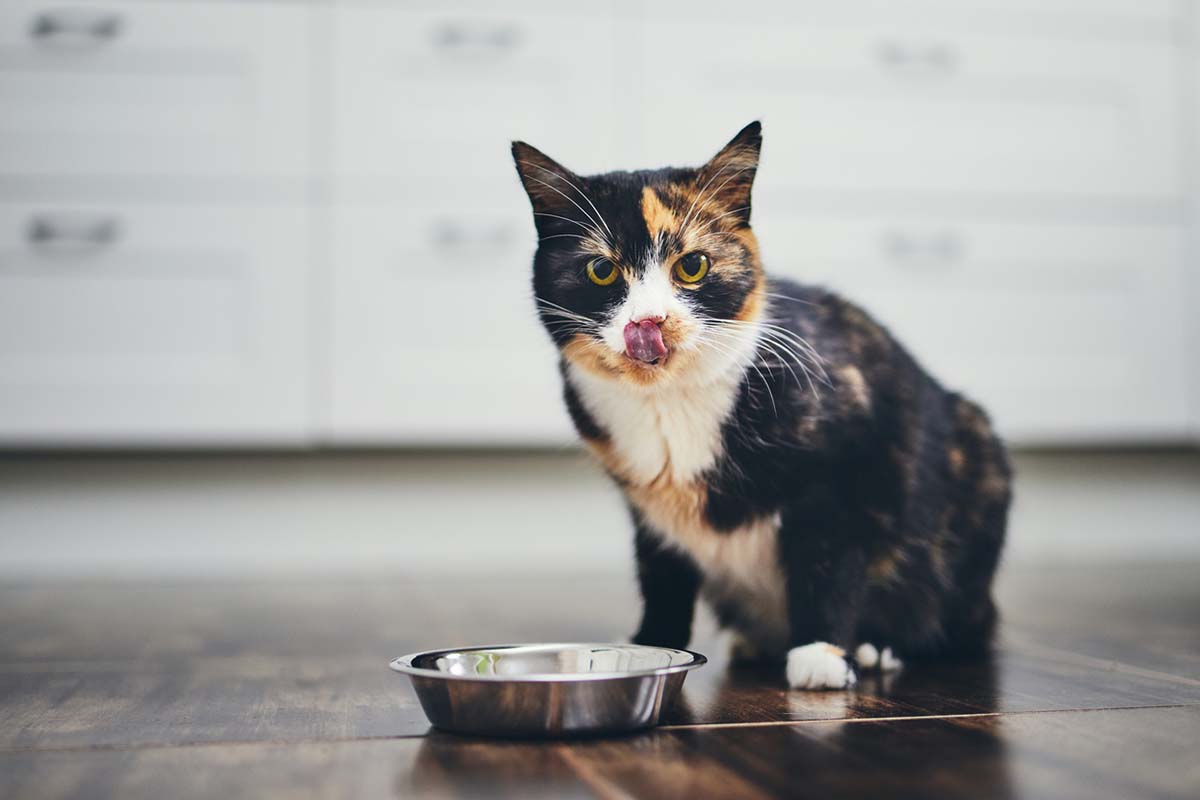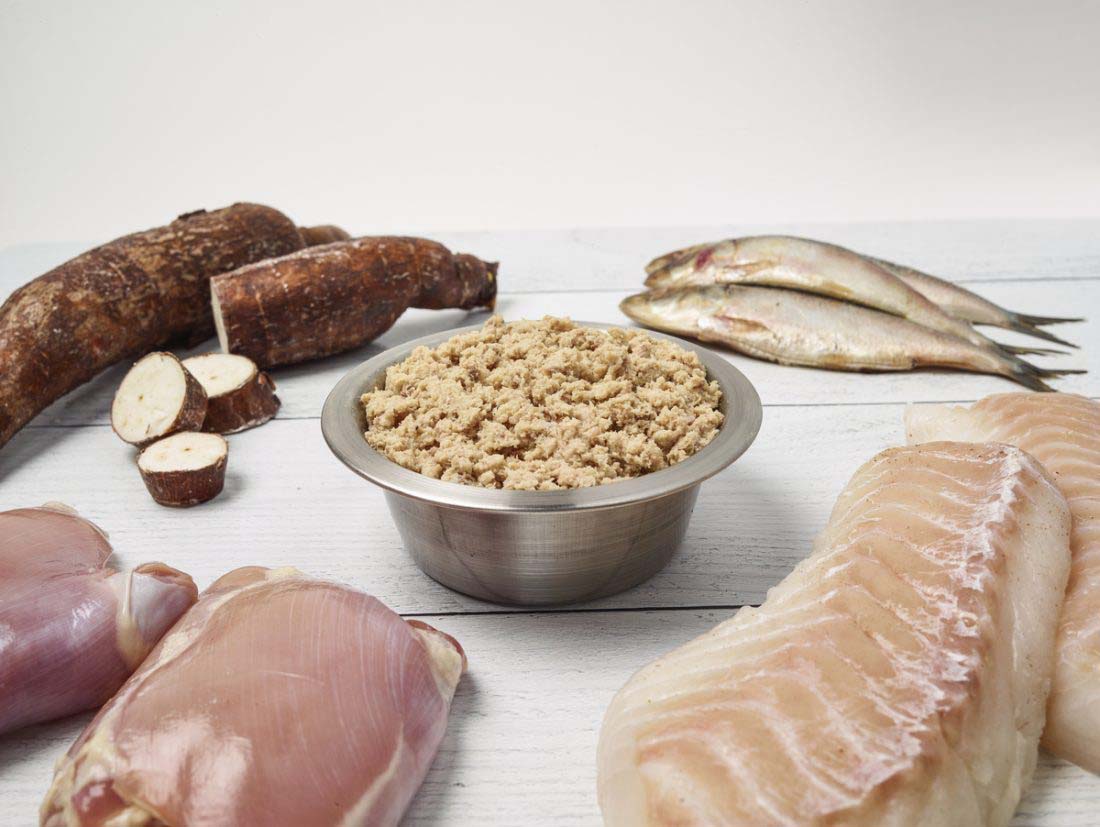Pica In Cats: Everything You Need To Know
Here’s what you need to know about pica in cats and our best recommendations to prevent and treat it.
You don’t need to be a doctor of veterinary medicine to recognize strange behavior in your cat, and obsessive chewing definitely qualifies as unusual. Here’s what you need to know about pica in cats and our best recommendations to prevent and treat it.
What Is Pica?
Pica in cats is a compulsive disorder where cats can’t stop biting, chewing, or ingesting non-food items. Consuming objects that aren’t edible is the most common pica behavior which can cause a number of health issues for cats.
When it comes to pica in cats, some of the most common items they tend to seek out include plastic bags, rubber, houseplants, and wooden furniture. Some cats may try to nibble on more dangerous items like electrical cords or shoe laces, or strange items like cardboard and litter or waste from the litter box.
A case of feline pica is considered mild if your cat doesn’t actually ingest the items and just can’t stop sucking or chewing on them, but can still be a cause for concern depending on the object they’re obsessing over.
Symptoms of Pica
The main indicator that your cat may have pica is when you witness the chewing behavior yourself. Observing your cat consistently biting or suckling non-edible items is the first way to tell, but other signs of pica in cats could be vomiting, diarrhea, lack of appetite, or constipation.
Health Issues Associated With Pica in Cats
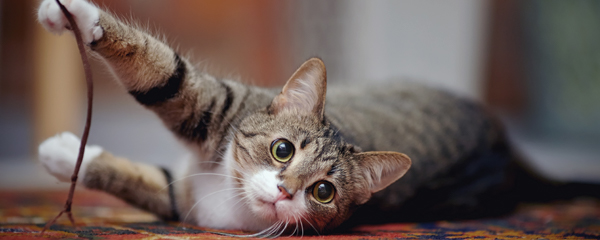
There are a series of health issues your cat may be up against depending on the non-edible objects they can’t stop pursuing. No pet parent wants to see their kitty suffer. Some of the medical issues pica behavior can cause jump quickly from uncomfortable to dangerous, including:
- Constipation
- Intestinal blockages
- Infections of the intestines
Causes of Pica in Cats
What does it mean when your cat can’t stop suckling non-edible items? There are a few different scenarios that may be contributing to your cat’s pica behavior.
1. Anxiety
Stress, anxiety, and extreme boredom for cats with lots of energy are the leading causes of pica in cats. Their little feline brains only have so many ways to deal with distress when you’re away, after a move to a new home, or just in general. The chewing and gnawing behavior associated with pica can become a coping mechanism for cats experiencing grief for one reason or another.
2. Early Weaning
While pica in cats can have many different root causes, one of the medical causes of pica is early weaning. Cats are considered weaned early when they’ve been weaned from breastfeeding before 12 weeks old. Typically cats are weaned at 12-14 weeks, and weaning before that can deprive them of essential nutrients necessary for their healthy development. This can cause health issues with cats’ immune systems and lead to behaviors such as pica.
3. Poor Diet or Nutrition
Your cat’s diet is a major indicator of their overall health. Nutritional deficiencies can be significant contributors to pica in cats. When they aren’t getting what you need from their diet, cats may have strange cravings and start exhibiting the chewing behavior associated with pica as a way to try and make up for what their diet is lacking.
4. Medical Conditions
There are a number of medical conditions that can cause cats to react with symptoms of pica. This is part of the reason why it’s so important to pay close attention when your cat starts pica behavior since some of these conditions can be life-threatening when untreated. Medical conditions that might result in pica include gastrointestinal disease, feline leukemia, feline immunodeficiency virus, hyperthyroidism, and anemia (low iron).
5. Genetics
Pica is possible in any cat breed regardless of age or size, but unfortunately, there are certain breeds of cats that are more likely to experience pica than others. Siamese cats, Burmese cats, Birman cats, and other Oriental cat breeds have a higher chance of developing pica behavior than other breeds.
How Do You Prevent or Treat Pica in Cats?
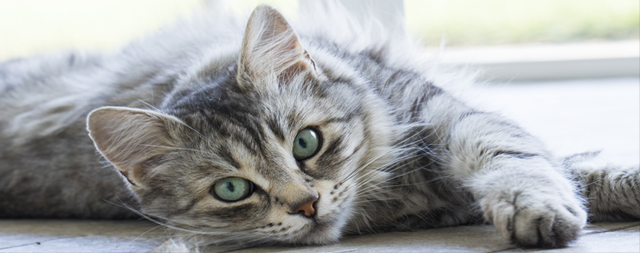
While pica in cats can range from mild to more serious, it’s not a behavior you want to encourage or take lightly. Here are the steps you can take to either prevent or help treat pica if your cat starts exhibiting symptoms.
Try Using Deterrents
Just like you would baby-proof a house or a room to keep little ones from getting into mischief, there are ways to chew-proof some of the objects cats with pica might go after.
For example, if your cat is going after electrical cords, you can try coating them with a light layer of dish soap, citrus oil, or hot sauce to deter your cat’s interest in chewing them. There are also store-bought sprays with scents that are known to make cats stay away, which you can apply to items around your home.
Provide A Well-Rounded Diet
One of the ways you can prevent pica before it starts is by making sure your cat’s diet is sufficient. As we mentioned, one of the causes of pica in cats can be a lack of nutrition or deficiencies in their diet.
Cat food should include protein as the first ingredient along with healthy fats, vitamins, and minerals. Different breeds, sizes, and ages of cats have different nutritional needs. Consult your veterinarian to get the best cat food recommendation for your cat’s specific needs.
Keep Your Cat Entertained
Give your cat enough playtime and enrichment to keep them from being bored enough to resort to pica behavior. Some cats need more toys, games, and interactive playtime than others, or it may just be your undivided attention they’re seeking. Either way, making sure your cat is stimulated is a great way to prevent pica behavior.
When it comes to cat toys, be sure the ones your furry friend has access to aren’t at risk of being eaten or having the catnip ripped out of them. Toys for your cat made from durable materials and dog chew toys are good options.
Adjust Your Cat’s Environment
Animal behaviorists suggest limiting your cat’s environment and their access to the non-edible objects they keep going after. Removing the items they keep trying to eat or closing doors to prevent them from getting into rooms where they might be tempted eliminates the opportunity (and the risk) for pica behavior.
If your cat can’t stop chewing on your shoelaces, keep the shoes in a closet with a closed door. If they’re pulling feathers out of your down pillow, limit their access to the bedroom when you’re not around.
Let Your Feline Enjoy Some Cat Grass
Cat grass is a great way to allow your cat to get that chewing sensation they’re seeking without any risks to their health (or your stuff). Not only does cat grass have extra nutrients and essential vitamins and minerals for your cat’s diet, but it also has a great taste and can meet their desire for chewing on rough textures.
This content is for informational use only and does not replace professional nutrition and/or medical advice, diagnosis, or treatment. It is not a substitute for and should not be relied upon for specific nutrition and/or medical recommendations. Please talk with your veterinarian about any questions or concerns.
